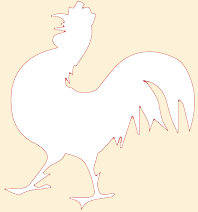
The beating heart of the farmhouse
Do you know where to find a 'Herrgottswinkel'? What an 'Ofenbrücke' is? Take a trip through time to find out about the culture surrounding farm parlours and South Tyrol's rustic farmhouse stoves.
Do you know where to find a 'Herrgottswinkel'? Or what an 'Ofenbrücke' is? And that for a long time, the farm parlour, or 'Stube', was the only room in the farmhouse that was heated? Take a trip through time to find out about the culture surrounding farm parlours and South Tyrol's rustic farmhouse stoves.
The word 'Stube' derives from the Old High German word 'stuba' and etymologically means a heated living room. Yet South Tyrolean 'Bauernstuben', or farm parlours, are more than just rooms. They embody culture and the rural lifestyle. They are living rooms, feel-good places, meeting points and provide a space for events. These farmhouse parlours are full of life and the focal point of the farmhouse. Just like in the past, they are a place for families and guests to warm up and enjoy a cosy atmosphere. What does a traditional South Tyrolean 'Stube' look like? A large room with wooden panels on the walls and a wooden ceiling, a large, solid wood table, ornate wooden chairs and corner seating, as well as a rustic stove built into the wall in the opposite corner. That's all it takes to create a magical atmosphere.

Corner shrines and tiled stoves
The 'Stube' has an unwritten rule: the table with seating for the whole family always has to be in the corner where the 'Herrgottswinkel', or mini shrine, is. This is the corner of the room with the crucifix on the wall, and is where the farm family places sprigs from olive branches at Easter to keep the house and farm safe and out of harm's way. Usually, there is a picture of the Virgin Mary and a 'Herrgottsbild' - a picture of Christ - either side of the crucifix.
The farm stove is found on the opposite side of the parlour. A difference has to be pointed out between a tiled stove and a traditional built-in stove. A tiled stove, or 'Kachelofen', is a tall stove inlaid with decorative ceramic tiles, which used to adorn the farm parlours of wealthy farmers. Barrel vaulted farm stoves built into the wall are far more commonplace. This type of stove is easily heated from outside the room, so that the room stays free of soot and smoke. Never missing from either of these types of stove is a cosy bench alongside it, along with an 'Ofenbrücke' on top of it! While the bench runs around the stove, the 'Brücke' is actually a wooden platform built right above the stove, both of which let the whole farm family benefit from the stove's warmth. Farmers enjoy having a midday nap on the bench, while the wooden beams around the stove are perfect for drying washing and the children like playing on the platform above the stove.
Did you know?
Find out the essential components of a South Tyrolean 'Bauernstube' here.
is traditionally made of solid wood.
runs around two sides of the table.
is the corner where the crucifix hangs on the wall.
has always been the central point of the room.
is most people's favourite spot.
insulates the room and keeps it nice and warm.
A room with a (his)story
If only the cracks and crevices of the old farm parlour could talk, there would be enough material there to fill a whole book. The 'Stube' has always been at the heart of daily life on the farm. This wood-panelled room literally used to be the living room. The whole family gathered here, children played here, mother did her weaving, while father did his wood carving. The family ate together in the 'Stube' three times a day, had a rest after a hard day's work and discussed problems to do with the farm. This was a place for celebrations, too. Tradition has it that St. Nicholas and the 'Christkind' still come into the farm parlour. Both cradles and coffins were placed here. The 'Stube' was the place for deceased persons to be laid out. All this made the 'Stube' a witness to events in the lives of the familes that lived there.
Even if the 'Stube' is no longer the only room in the farmhouse to be heated, it is still the cosiest. This is where people go to relax, eat, sing and have a laugh. Guests on farms also appreciate this room and it is often used as their common room. Whether it is for a game of cards, warming up by the stove, drinking a glass of wine or eating an excellent farmhouse breakfast, it is the scene of moments of human contact in a shared space. It not only provides physical comfort, but also promotes spiritual wellbeing. Just as in the past, the farmhouse parlour emanates warmth and homeliness, enourages people to spend time together and creates a cosy, inclusive environment for all.









